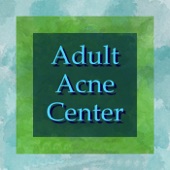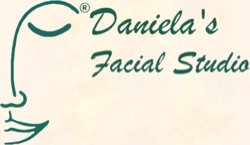





All About Rosacea
Pronounced roh-Zay-shah, this condition afflicts people mainly of northern European (including British) descent, but can be experienced by people of other races as well. It is marked by a chronic, defuse redness on the cheeks, chin, nose and forehead, with a collection of visible blood vessels that look like a tiny roadmap. When the condition worsens during a “flare-up”, small pimples with white heads can develop in some people, while in others who are more dry, the redness simply gets worse. Both calm down after the flare-up subsides. Generally it starts to show up in our late twenties - early thirties, but can start showing before.
One of the primary ways you can tell a rosacea breakout from an adult acne breakout, is that in rosacea there is not the presence of large blackheads that often exist in the midst of an adult acne breakout. Another way you can tell is that the redness associated with an adult acne breakout is only on the blemishes themselves, whereas with rosacea the redness surrounds the entire area on and around any red bumps. If you have redness around the entire cheek and chin area, and the small pimples there are not accompanied by blackheads, you're suffering from a rosacea flare-up, not an adult acne breakout.
It was previously thought to be a skin condition, but it is now understood that rosacea is actually a vascular disorder and cannot be addressed by acne remedies - in fact, acne remedies make rosacea worse. The cause is unknown and there is no cure, but it is understood to be genetic, together with an inherited weakness in capillary walls, with an added sensitivity to a certain mite living on the skin that all of us get in the hospital when we're born.
Skincare, therefore, must concentrate on calming and soothing the skin, reducing the intensity of blood flow and strengthening capillary walls, with supplements and lifestyle changes. In more severe cases, prescription medications, like Oracea, Finacea, Metrogel or Metrocreme are very effective when used in conjunction with proper, supportive skincare.
Lifestyle Changes:
• THE BIGGEST ROSACEA TRIGGER IS SUN EXPOSURE! You must become obsessive about sunscreen, re-applying several times a day.
• Lower consumption of alcohol, or if the problem is severe, cut it out completely.
• Eliminate things like spicy or other foods if you notice they cause flare-ups (in most people they actually don't, but take note and see if this happens to you).
• Exercise in ventilated areas only, or if outside, before 10am or after 4pm.
• Entirely avoid steam rooms and saunas, which also means no hot yoga (so sorry).
• Turn down the temperature of your shower.
• Stand by an open window when in a heated, or intense, conversation.
• Cover your face between extreme changes in temperature, i.e. from cold wind to a warm building.
• While driving, open your passenger side window a crack when the heat is on full blast, or have the heat on low with the vents directed away from you.
• Increase consumption of dark green leafy vegetables, orange and yellow vegetables, and eat the "pith" of citrus fruits (that's the white stuff you normally throw away).
• Take a supplement of vitamin C with extra bioflavonoids added in, such as a supplement called “Quercetin Complex”.
Your daily skincare routine for Rosacea, sensitive skin, and capillary redness should be as follows :
AM:
1. Cleanse : mild foaming cleanser if oily, soothing lotion cleanser if dry
2. Tone : alcohol-free toner that is calming and reparative
3. Calm : calming, hydrating, repairing, anti-redness serum
4. Sunscreen : hydrating and designed for sensitive skin, and totally non-clogging
5. Protect : Lipid barrier replacement serum
PM:
1. Cleanse : mild foaming cleanser if oily, soothing lotion cleanser if dry
2. Tone : alcohol-free toner that is calming and reparative
3. Calm : calming, hydrating, repairing serum
4. Moisturize : must be hydrating and calming, and totally non-clogging
5. Protect : Lipid barrier replacement serum
1 to 2 times per week: a calming gel mask if dry, or a lightly exfoliating gel mask if oily/broken out.
Exfoliation may not be necessary and may even not be possible, depending on the severity of your overall condition or flare-up. Some skins can handle AHA's and others can only handle a periodic facial for exfoliation. Each individual case is different.
If you'd like more personalized help, the Eval by Email® Online Skincare Consultation is designed to help with sensitivity and rosacea problems as well as adult acne!






